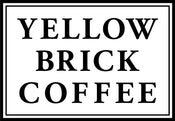By Zoe Zibolsky
We are often asked if we have a dark roast or which of our offerings is roasted the darkest, and understandably so. Dark-roasted coffee has traditionally been a go-to for coffee lovers: a roasty and full-bodied cup. As time has gone on, and with the birth of specialty coffee, many roasteries are abandoning this roasting style for one that can better capture the different notes that each coffee has to offer.

THE MAILLAIRD REACTION
In the roasting process, unique chemical reactions are happening, and by roasting darker, the flavors that those reactions produce are being lost. The main chemical reaction that occurs during the roasting process is called the Maillaird reaction. The Maillaird reaction is a complex reaction between amino acids and sugars which results in the creation of hundreds of chemical compounds that affect the aroma and coloring of the coffee. The aromas and flavors highlighted are thus dependent on roast profiling, where different changes in roasting parameters, like development time and temperature, can greatly influence the final flavor profile.

ROAST PROFILING
Skilled roasters create “roast profiles,” or recipes, for each single origin coffee, allowing them to pinpoint and showcase these unique flavors. An individual coffee is “sample roasted” multiple different ways, and then these samples are “cupped” alongside each other in order to determine the best recipe to highlight the complexities of that coffee. Once a recipe is chosen, it becomes the standard roasting parameter for that coffee, thus allowing for better quality control and consistency of the final product.

HIDING BEHIND THE DARK ROAST
Dark roasts allow for a consistent flavor while masking imperfections generally found in coffee of lower quality. Historically, much of the world's coffee did not receive the same quality control that is present today. In an attempt to hide undesirable flavors that come about from lower quality coffee, consumers were offered darker roasts which bring out the well known roasty “coffee flavor”. Roasting darker also results in decreased complexity in the cup, as the longer the coffee develops in the roaster and the higher the roasting temperature, the more “one-note” or uniform in flavor it becomes. Whereas darker roasts tend to have that “classic” bitterness that many associate with the taste of coffee, lighter roasts highlight the natural flavors found in each coffee and are instead characterized by a distinct acidity and sweetness. Showcasing the complexities and nuances that come from different origins is not a passing fad. With this in mind, roasters are able to maintain the integrity of the coffee and pay respect to the effort and care that has gone into producing quality coffee.
There is not one right way to roast coffee. Many roasters have different philosophies and methodologies behind what coffee they buy and how they roast. Customers are left with more than enough opportunity to find a roaster whose craft is in line with their taste.

